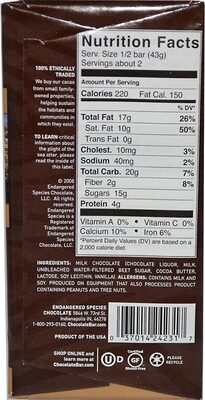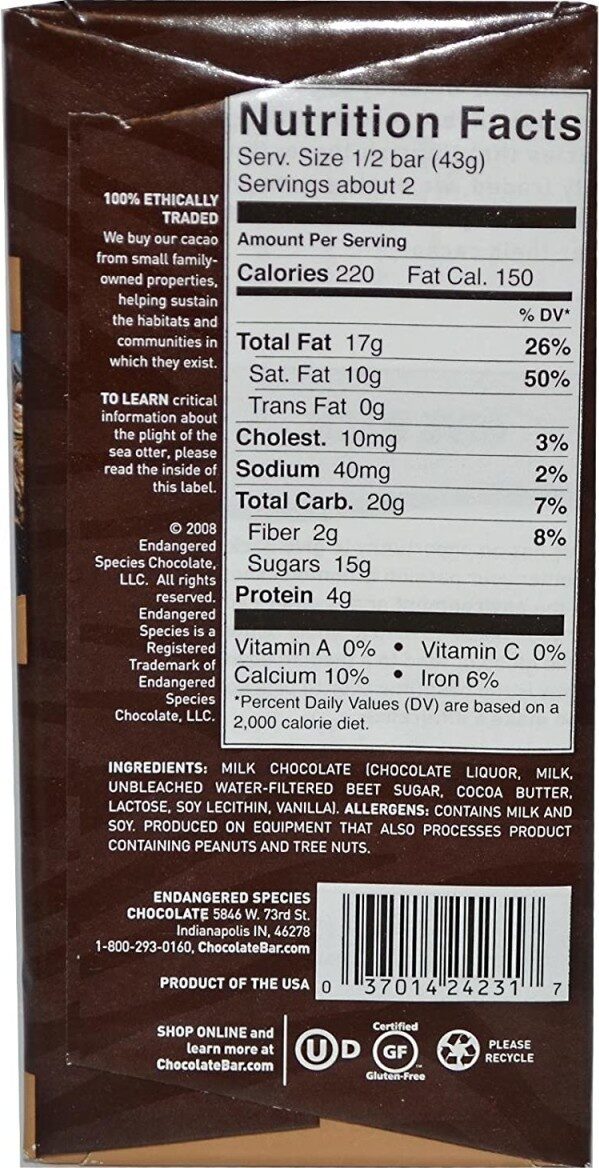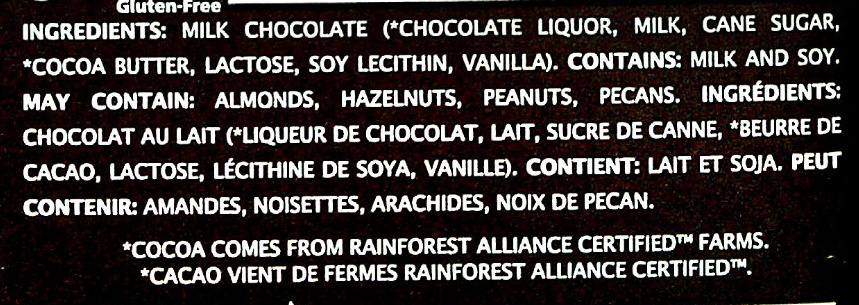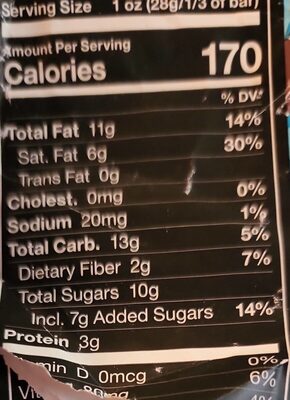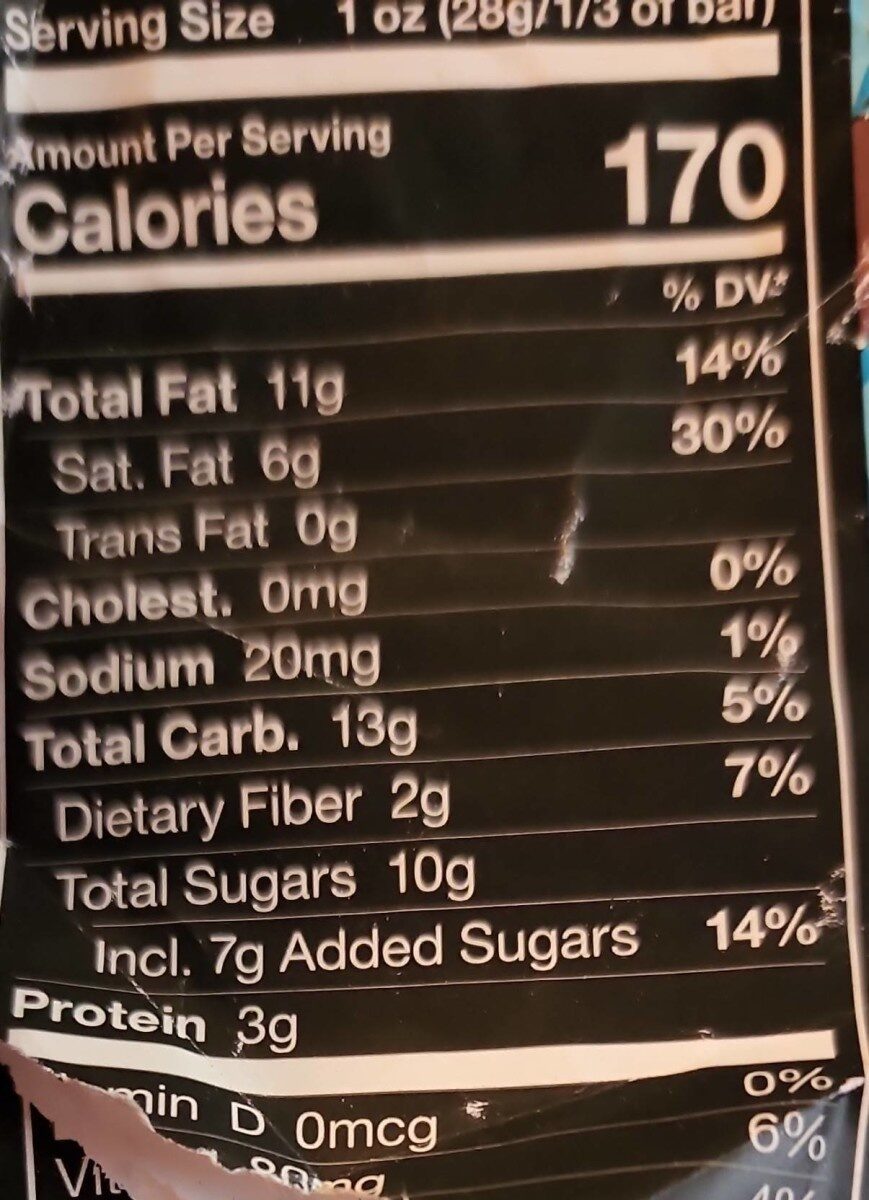Chocolate smooth milk chocolate bar - endangered species chocolate - 85 g
This product page is not complete. You can help to complete it by editing it and adding more data from the photos we have, or by taking more photos using the app for Android or iPhone/iPad. Thank you!
×
Barcode: 0037014242317 (EAN / EAN-13) 037014242317 (UPC / UPC-A)
Common name: milk chocolate
Quantity: 85 g
Packaging: Paper, Aluminum foil
Brands: endangered species chocolate
Brand owner: The Endangered Species Chocolate Co
Categories: Snacks, Sweet snacks, Cocoa and its products, Confectioneries, Chocolate candies, Chocolates, Milk chocolates
Labels, certifications, awards:
No gluten, Rainforest Alliance, Ethical trade
Manufacturing or processing places: USA
Stores: Ambrosia
Countries where sold: Canada, United States
Matching with your preferences
Environment
Carbon footprint
Packaging
Transportation
Labels
Report a problem
Data sources
Product added on by hummingbrid
Last edit of product page on by kiliweb.
Product page also edited by moon-rabbit, org-database-usda, packbot, upcbot, usda-ndb-import, yuka.sY2b0xO6T85zoF3NwEKvlmhHet-PoyvHMD3RvXaiwf2wcZHUaPhq5LXFL6g.
